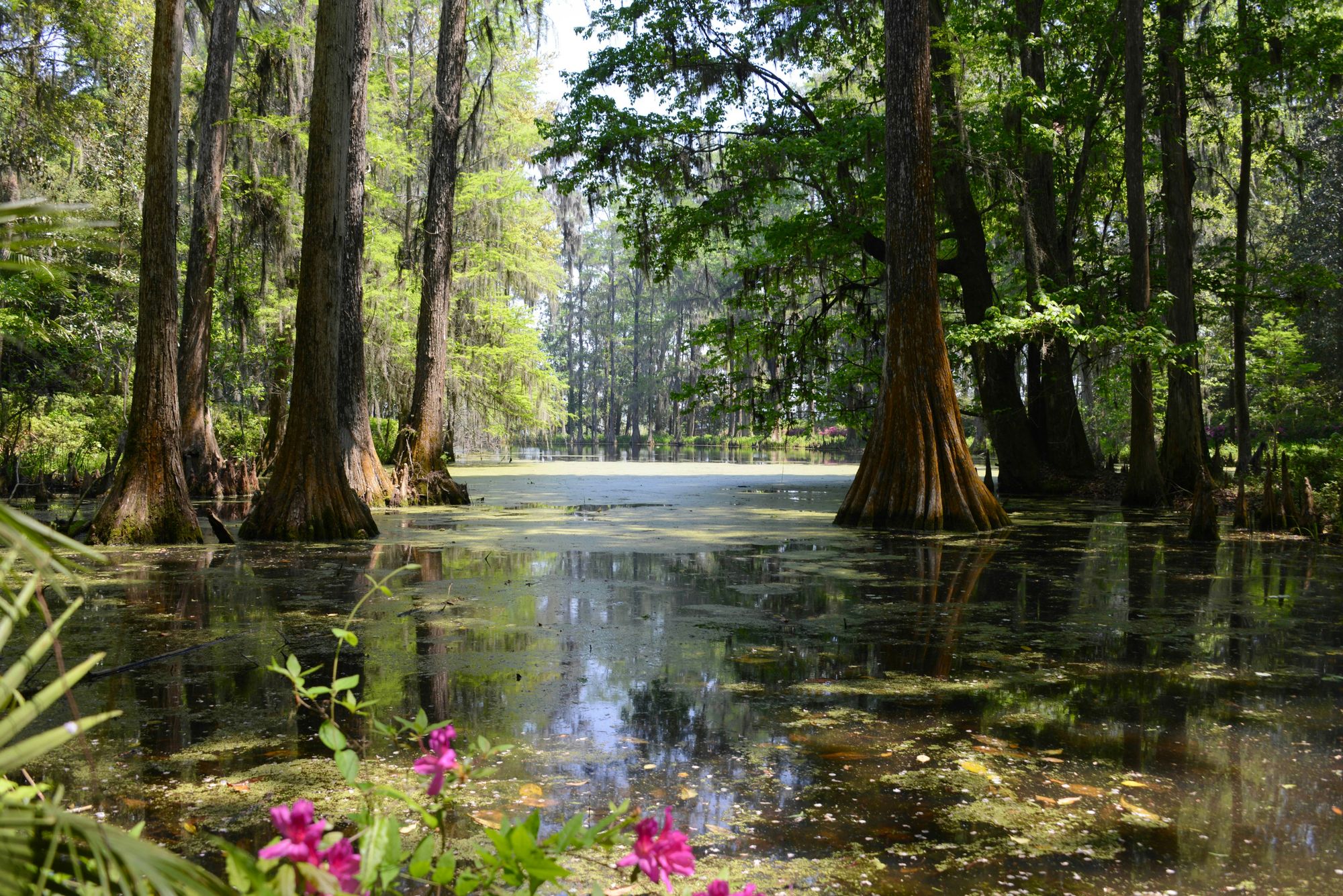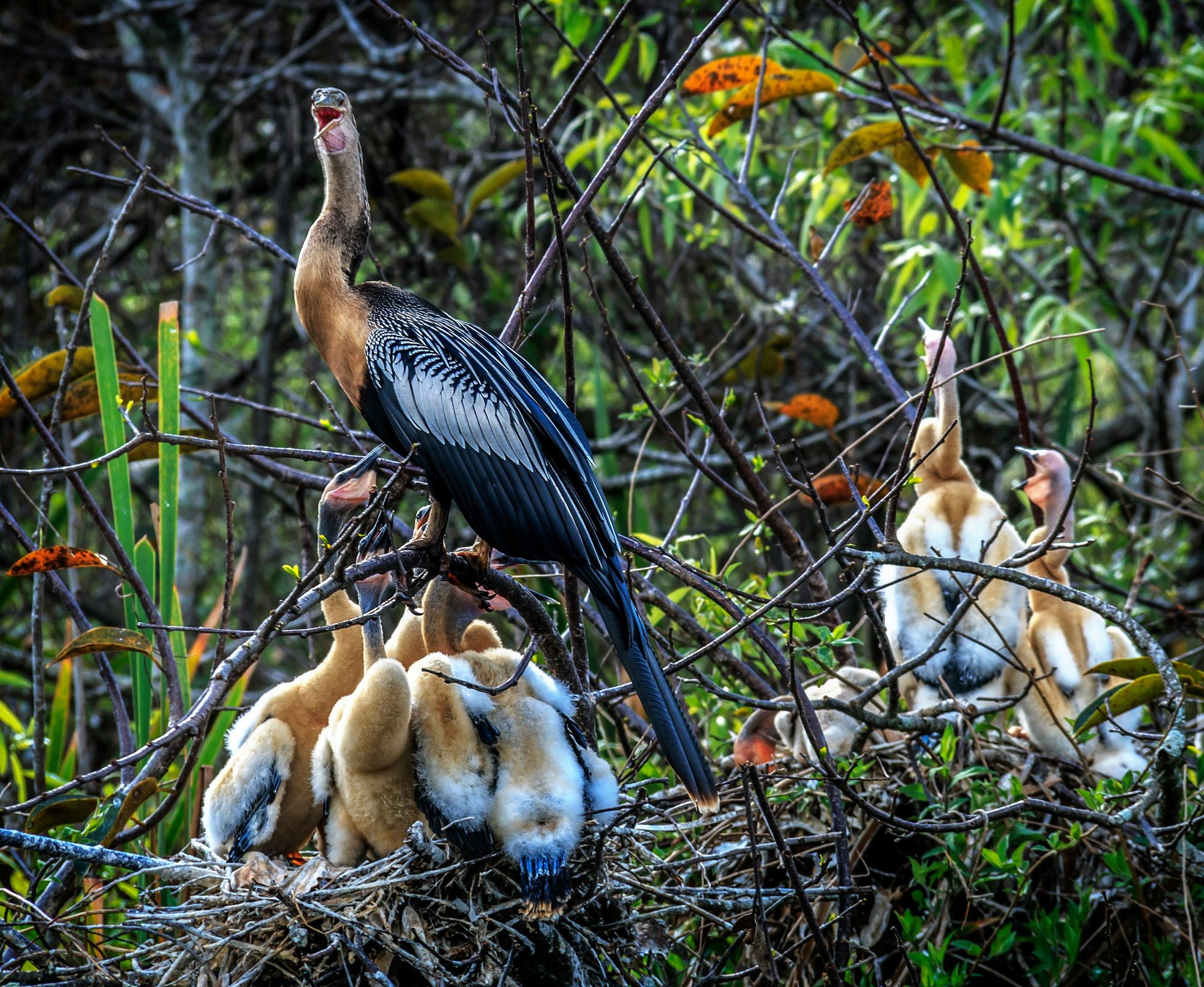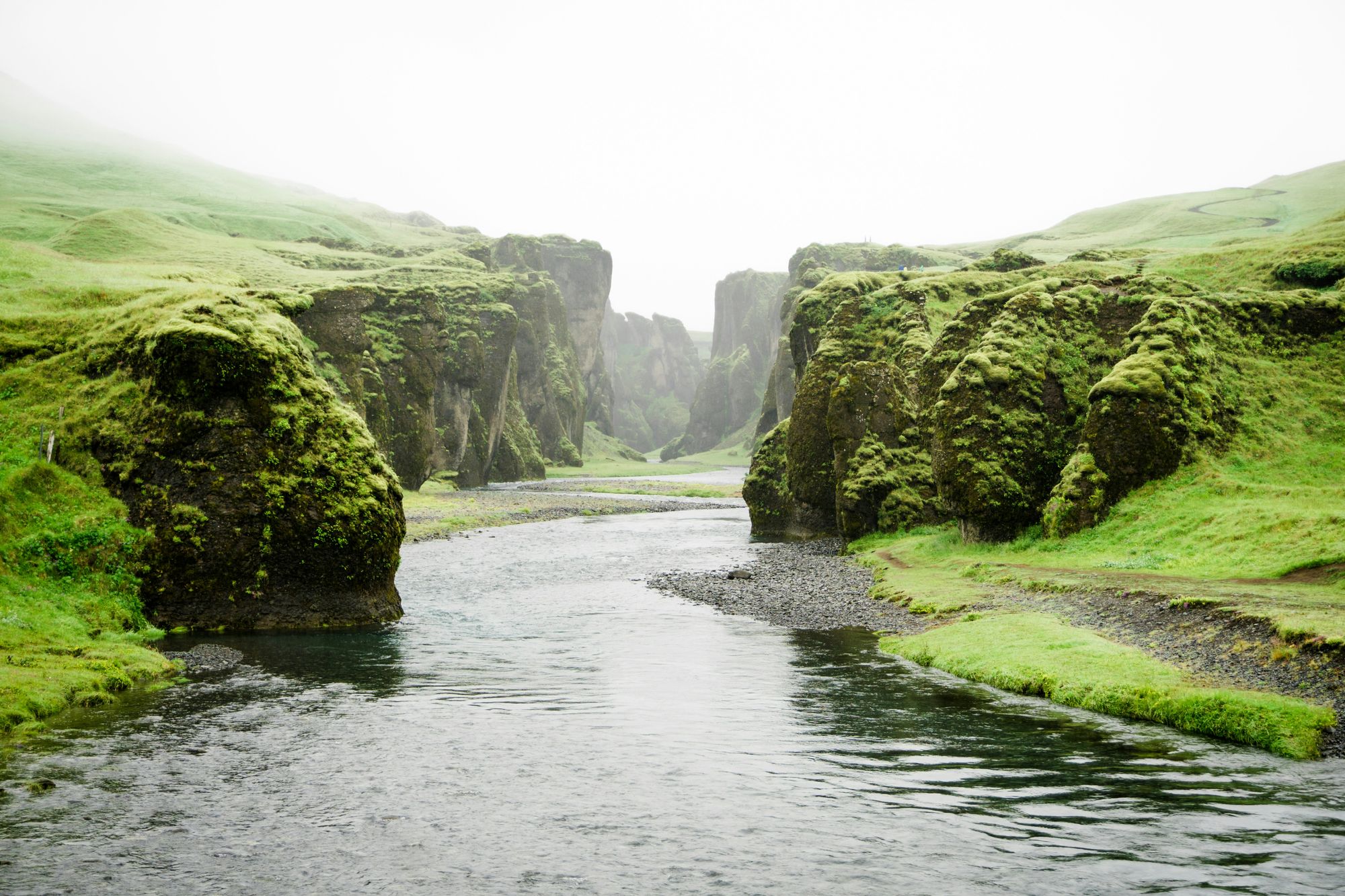Best Things To Do In Miramar, Florida

Miramar is a city in South Florida's Broward County, near the Atlantic coast. It is part of the Miami metropolitan area, which has a population of around six million people.
The city was developed in the early 1950s with the goal of being a moderately priced place to live. Additionally, it was a short travel to Miami and Fort Lauderdale, which were home to a large number of the area's major enterprises.
Miramar is now home to a variety of varied neighborhoods and is located near many of the state's most popular leisure areas. However, while planning a trip to Miami, you must remember to experience all these best things on your trip. So, without any doubt, start planning, make jetblue airlines booking online in any class and save up to 45% off on one-way & round trips on every flight. To help you out, scroll down and have a look at The best things to do in Miramar, Florida for some extra fun!
The following are some must-do activities in and around Miramar, Florida.
Golf Course in Flamingo Lakes

If "Flamingo Lakes" is a specific golf course or community with a golf course, you may want to check the most recent and specific information from local sources, the golf course's official website, or local community websites for the latest details. Here's a general overview of what you might find at a golf course:
Course Layout: Golf courses typically have 18 holes, but there are also 9-hole courses. Each hole has a tee box, fairway, rough, hazards (such as bunkers and water), and a green with a flag indicating the hole's location.
Facilities:
- Clubhouse: A central facility often includes amenities such as a pro shop, locker rooms, and a restaurant or bar.
- Driving Range: A practice area with teeing grounds where golfers can practice their shots.
- Putting Green: A specially prepared area for golfers to practice putting.
Membership and Fees: Golf courses usually offer various membership options, including annual memberships, monthly plans, and daily fees for non-members. The fees often cover the cost of using the course and its facilities.
Tournaments and Events: Golf courses may host tournaments, leagues, or events for members and the public. These can range from casual outings to more competitive tournaments.
Lessons and Clinics: Many golf courses offer lessons and clinics for players of all skill levels. These may be conducted by resident golf professionals.
Maintenance: Regular maintenance is crucial for a golf course. This includes mowing the grass, maintaining bunkers, and ensuring the overall health of the course.
Community: If Flamingo Lakes is part of a residential community, the golf course might be a focal point for social activities and community gatherings.
Remember that the specific details will depend on the policies and offerings of the Flamingo Lakes golf course. For the most accurate and up-to-date information, please check with the golf course management or visit their official website if available.
How to Reach Golf Course in Flamingo Lakes

As of my last knowledge update in January , I don't have specific information about a golf course in Flamingo Lakes. However, I can provide you with general guidance on how to reach a golf course based on common practices. If Flamingo Lakes is a specific location, you might want to use online maps or contact local sources for the most accurate and up-to-date directions. Here are general steps you can take:
Online Maps: Use online mapping services such as Google Maps, Apple Maps, or other navigation apps. Enter the name of the golf course or the specific location within Flamingo Lakes to get detailed directions.
GPS Coordinates: If you have the specific GPS coordinates of the golf course, you can enter them into your GPS device or smartphone for precise directions.
Contact the Golf Course: Look for contact information for the golf course, such as a phone number or email address. Reach out to them directly and ask for directions or any specific information on how to reach the location.
Local Information: If Flamingo Lakes is a known area, ask locals or check with nearby residents for directions. They may provide valuable insights on the best routes.
Website Information: Check the official website of the golf course, if available. Many golf courses provide detailed information on how to reach them, including directions from major landmarks or cities.
Social Media: Some golf courses may have social media pages where they share information about events and updates. Check these platforms for any information on reaching the golf course.
Signage: Once you are in the vicinity of Flamingo Lakes, look for signs that guide you to the golf course. Golf courses often have directional signage from main roads.
Flamingo Lakes Golf Course, conveniently located off Interstate 75, is a challenging and beautiful park 71 course that many players believe to be one of the area's best-kept secrets. The course is semi-private, which means it is open to the public, although members have priority during peak seasons when tee times are few. Greens fees are reasonable by Florida golf standards. While there are some challenging sections of the course, it is filled with well-groomed fairways and greens comparable to those seen on top private courses.
Park C. B. Smith

CB Smith Park, located near Pembroke Pines, is home to Paradise Waters Cove, an actual water park that attracts a large number of families during the summer months when Florida's notorious weather can be downright hot, humid, and nasty. CB Smith Park is much more than a conventional park with a duck pond and a few picnic tables; it offers a variety of activities and is more of a kids' resort thanks to anything else.
As of my last knowledge update in January 2022, C.B. Smith Park is a popular public park located in Pembroke Pines, Florida, in Broward County. Please note that details might have changed, so it's advisable to check the most recent information for the latest updates.
Location: C.B. Smith Park is situated at 900 N. Flamingo Road, Pembroke Pines, Florida, 33028, USA.
Features and Activities
Water Park: The park features a water park known as "Paradise Cove Water Park," which includes water slides, a lazy river, and other aquatic attractions. It's a popular spot for families, especially during the warmer months.
Recreational Activities: The park offers a range of recreational activities, including sports fields for baseball, softball, and soccer. There are also basketball courts and tennis courts.
Picnic Areas: C.B. Smith Park provides picnic areas and pavilions, making it a suitable location for family gatherings, picnics, and barbecues.
Fishing: The park has a lake where fishing is allowed. Anglers can enjoy fishing in a peaceful setting.
Camping: The park offers camping facilities, allowing visitors to experience outdoor camping in a controlled environment.
Playgrounds: There are playgrounds for children, providing a space for them to play and enjoy various recreational activities.
Events and Festivals: C.B. Smith Park hosts various events, festivals, and community gatherings throughout the year. These events may include seasonal celebrations, concerts, and more.
Athletic Leagues: The park may host or facilitate various athletic leagues and tournaments for different sports.
Entrance Fees: There is typically an entrance fee for visitors to access the park, and additional fees may apply for specific amenities or activities.
Before planning a visit, it's recommended to check the official Broward County Parks website or contact the park directly for the most up-to-date information on operating hours, fees, and any special events or programs they may offer.
How to Reach Park C. B. Smith

To reach C.B. Smith Park in Pembroke Pines, Florida, you can follow these general directions. Please note that these directions are based on the information available as of my last knowledge update in January 2022. Verify the directions using a reliable map service or GPS for the most accurate and up-to-date information.
Address: C.B. Smith Park 900 N. Flamingo Road, Pembroke Pines, FL 33028, USA
Directions:
From Fort Lauderdale:
- Head southwest on I-595 W.
- Take exit 1B for Florida's Turnpike South toward Miami.
- Merge onto Florida's Turnpike South.
- Take exit 49 for FL-820 W/Pines Boulevard.
- Keep left at the fork and follow signs for Pines Boulevard W.
- Turn left onto N. Flamingo Road.
- C.B. Smith Park will be on your right.
From Miami:
- Take I-75 N toward Naples.
- Use the right two lanes to take exit 9A-9B for FL-821 N/Florida's Turnpike N toward Orlando.
- Merge onto Florida's Turnpike N.
- Take exit 49 for FL-820 W/Pines Boulevard.
- Keep left at the fork and follow signs for Pines Boulevard W.
- Turn left onto N. Flamingo Road.
- C.B. Smith Park will be on your right.
From Hollywood:
- Take FL-820 W/Pines Boulevard.
- Turn right onto N. Flamingo Road.
- C.B. Smith Park will be on your right.
Using GPS:
- Enter the park's address (900 N. Flamingo Road, Pembroke Pines, FL 33028) into your GPS or map application for turn-by-turn directions.
Always check for road closures, construction, or any other real-time updates that may affect your route. Additionally, consider using a reliable navigation app like Google Maps or Waze for live traffic updates and the most accurate directions.
Mini Golf Monster

As of my last knowledge update in January 2022, I don't have specific information about a Mini Golf Monster. It's possible that it could be a unique and local mini-golf course or establishment that may not be widely known. To get more accurate and up-to-date details about Mini Golf Monster, I recommend checking local directories, online review platforms, or contacting local tourism or recreation offices in the specific area where you believe Mini Golf Monster is located.
Miniature Golf Courses: Mini Golf Monster is likely to offer a miniature golf course with creatively designed holes and obstacles. Mini-golf is a recreational activity enjoyed by individuals and families of all ages.
Themed Elements: Some mini-golf courses have themes or unique features on each hole, such as pirate ships, water features, or other creative obstacles.
Facilities: Depending on the establishment, there may be additional facilities such as a clubhouse, a snack bar, and outdoor seating areas.
Events and Parties: Mini-golf places often host events, birthday parties, or group outings. They may offer special packages for larger groups.
Pricing and Hours: Check for information regarding the pricing of a round of mini-golf, any package deals, and the operating hours of Mini Golf Monster.
Reviews and Ratings: Look for reviews on online platforms like Google Maps, Yelp, or TripAdvisor to get insights into the experiences of other visitors.
Contact Information: If you have a specific location in mind, try searching for Mini Golf Monster along with the city or area name. Look for contact information such as a phone number or website to get more details.
Remember, the information provided here is general, and specifics about Mini Golf Monster will depend on its unique features and offerings. It's always a good idea to check directly with the establishment or look for recent reviews for the most accurate information.
The neighborhood is home to a variety of family-friendly activities, including Monster Mini Golf on Miramar Parkway, a popular mini-golf facility complete with arcade games, laser tag, and mazes. With its illuminated golf balls and hazards, the course takes on a strange and frightening character at night, which makes it a huge hit with tiny children. Naturally, this is the resort's crown jewel.
How to Reach Mini Golf Monster

If Mini Golf Monster is a specific mini-golf establishment, it may not be widely known or may have been established after my last update.
Online Search: Conduct an online search using search engines like Google. Enter "Mini Golf Monster" along with the city or area name where you believe it is located.
Local Directories: Check local directories, both online and offline. Online directories like Google Maps often provide directions to businesses. You can also check local business directories.
Social Media: Check social media platforms for any official pages or profiles of Mini Golf Monster. Businesses often provide location details and updates on platforms like Facebook or Instagram.
Contact Information: If you find contact information for Mini Golf Monster, such as a phone number or email, use that to inquire about the location and directions.
Local Recommendations: Ask locals or check with local tourism offices, recreational centers, or community centers. They might have information on Mini Golf Monster and how to reach it.
Review Platforms: Look for reviews on platforms like Google Maps, Yelp, or TripAdvisor. Reviewers often mention the location and sometimes provide additional information on how to get there.
Visit the Location: If you have a general idea of the area where Mini Golf Monster is located, you can visit that area and look for signs or ask locals for directions.
Remember to verify the information and directions with the most recent and reliable sources, as details can change over time. If you have a specific city or area in mind, you may also provide that information for more targeted assistance.
Big Cypress Preserve

Big Cypress National Preserve is a unique and important natural area located in southern Florida in the United States. It was established in 1974 to preserve the Big Cypress Swamp, a freshwater swamp ecosystem that is essential for the health of the Everglades ecosystem. Here are some key details about Big Cypress National Preserve:
Location: Big Cypress National Preserve is situated in southern Florida, to the west of Miami. It spans parts of Collier, Monroe, and Miami-Dade counties.
Key Features:
Swamp Ecosystem: The preserve protects the Big Cypress Swamp, which is a crucial part of the greater Everglades ecosystem. It is home to a diverse range of plant and animal species.
Wildlife: Big Cypress is known for its rich biodiversity, including alligators, panthers, black bears, manatees, and a variety of bird species. It's a popular destination for wildlife enthusiasts and birdwatchers.
Recreational Activities: Visitors can enjoy a range of outdoor activities, such as hiking, birdwatching, photography, and wildlife observation. There are also designated areas for hunting and fishing.
Visitor Centers: The preserve has visitor centers, including the Big Cypress Swamp Welcome Center, where visitors can obtain maps, information, and learn more about the area's ecology.
Alligator Alley: The section of Interstate 75 that traverses the preserve is often referred to as "Alligator Alley" due to the abundant alligator population in the area.
How to Reach: The preserve is accessible from major cities in southern Florida. If you are traveling from Miami, you can take US Highway 41 west. From Naples, you can use I-75 and exit onto US Highway 41 east.
Activities and Tips:
- Explore the preserve by taking scenic drives, such as the Tamiami Trail Scenic Highway.
- Check with visitor centers for current conditions, trail information, and any advisories.
- Be prepared for the subtropical climate with heat, humidity, and occasional rainfall.
Visitor Centers: The Oasis Visitor Center and the Big Cypress Swamp Welcome Center are two visitor centers that provide information, educational programs, and exhibits.
The Big Cypress National Preserve in Florida is home to some of the largest cypress swamps in the southern United States, as well as a diverse array of marine, avian, reptile, and mammalian species. Panthers, which resemble little mountain lions, are a little-known truth about Florida that often impresses tourists.
How to Reach Big Cypress Preserve

To reach Big Cypress National Preserve, you can use various routes depending on your starting location. The preserve is located in southern Florida, and the primary access is typically from major cities in the region. Here are general directions from two major cities in Florida:
From Miami:
- Take I-75 North (Alligator Alley) toward Naples.
- Continue on I-75 North until you reach Exit 80 for US Highway 29.
- Take Exit 80 and head north on US Highway 29.
- Follow the signs to the Big Cypress National Preserve.
From Naples:
- Take I-75 South toward Miami.
- Continue on I-75 South until you reach Exit 80 for US Highway 29.
- Take Exit 80 and head north on US Highway 29.
- Follow the signs to the Big Cypress National Preserve.
Please note that these directions are general, and it's essential to use a GPS navigation system or a map for real-time and accurate guidance. The entrance to Big Cypress National Preserve is accessible from the Tamiami Trail (US Highway 41) and Alligator Alley (I-75). Once you are in the vicinity of the preserve, follow signs to the visitor centers or specific areas of interest.
Address for Reference: Big Cypress Swamp Welcome Center: 33000 Tamiami Trail E, Ochopee, FL 34141, USA
Tips:
- Check the official website of Big Cypress National Preserve for any road closures, alerts, or updates before your trip.
- Be aware of the subtropical climate, especially if you plan to explore outdoor activities. Carry water, sunscreen, and appropriate clothing.
- Stop by one of the visitor centers for information, maps, and guidance on the best spots to explore within the preserve.
Always verify directions and plan your route based on the most recent information, as road conditions or construction may affect the usual routes.
The Everglades National Park

Certainly! Everglades National Park is a vast and unique natural preserve located in southern Florida, USA. Established in 1947, the park protects a significant portion of the Florida Everglades, a large wetland ecosystem known for its diverse wildlife and distinctive landscapes. Here are more details about Everglades National Park:
Location: Everglades National Park spans across the southern tip of Florida, covering approximately 1.5 million acres. It is located between Miami and Naples and is easily accessible from major cities in the region.
Key Features
Ecosystem Diversity: The park encompasses a variety of ecosystems, including freshwater sloughs, sawgrass marshes, hardwood hammocks, mangrove forests, and coastal areas. It is home to one of the largest tropical wildernesses of any kind in the U.S.
Wildlife: Everglades National Park is renowned for its rich biodiversity. It is home to a diverse range of wildlife, including alligators, crocodiles, manatees, dolphins, various bird species, and the elusive Florida panther.
Flora and Fauna: The park is characterized by its sawgrass prairies, cypress swamps, and mangrove forests. It supports unique plant species adapted to the wetland environment.
Water Flow: The park's ecosystem is shaped by the flow of freshwater from Lake Okeechobee through the "River of Grass" – a slow-moving, shallow sheet of water that covers the landscape.
Visitor Centers: Everglades National Park has several visitor centers, including the Ernest F. Coe Visitor Center, Flamingo Visitor Center, and Shark Valley Visitor Center. These centers provide information, exhibits, and educational programs.
Activities
- Wildlife Viewing: The park offers excellent opportunities for birdwatching and wildlife observation.
- Boating: Visitors can explore the park's waterways by boat, canoe, or kayak.
- Hiking and Trails: There are various trails for hiking, ranging from short walks to longer backcountry trails.
- Tram Tours: The Shark Valley Tram Tour provides a narrated tram ride through the park's sawgrass prairies.
Entrance Points: There are multiple entrances to Everglades National Park. The main entrances are from Homestead, Florida City, and Everglades City.
Visitor Tips
- Check the park's official website for information on current conditions, ranger-led programs, and any alerts.
- Be mindful of the park's subtropical climate, with hot and humid weather especially during the summer months.
- Respect wildlife and follow Leave No Trace principles when exploring the park.
Everglades National Park, one of the nation's major parks, encompasses about 1.5 million acres and is home to an unusually diverse array of flora and fauna. It is recommended to join a guided tour if you want to get up and personal with some of the park's most popular and dangerous wildlife, including alligators, manatees, dolphins, and crocodiles. Because the park is so huge and provides so many activities, it's a good idea to stop at a welcome center to get a sense of the area and get some Travel advice from the rangers before embarking on your own trip.
How to Reach The Everglades National Park

To reach Everglades National Park, you can use various routes depending on your starting location. The park spans a large area, so there are different entrances accessible from different cities in southern Florida. Here are general directions from two major cities in the region:
From Miami:
- Take Florida's Turnpike South toward Homestead.
- Continue on Florida's Turnpike South until you reach Exit 6 for Homestead Extension/US-1 South.
- Merge onto FL-821 South/Homestead Extension of Florida's Turnpike.
- Continue onto US-1 South.
- Follow signs to the Homestead entrance of Everglades National Park.
From Naples/Fort Myers:
- Take I-75 South toward Miami.
- Merge onto FL-29 South via Exit 80 toward Everglades City.
- Continue on FL-29 South until you reach US-41 East/Tamiami Trail.
- Turn left onto US-41 East.
- Follow signs to the Gulf Coast entrance or Shark Valley entrance of Everglades National Park.
Please note that these directions are general, and it's essential to use a GPS navigation system or a map for real-time and accurate guidance. The park has multiple entrances, including the Homestead entrance, Shark Valley entrance, and the Gulf Coast entrance. Depending on the specific area you want to explore within the park, you may choose the entrance that best suits your interests.
Entrances to Everglades National Park
Homestead Entrance: This entrance is near the Ernest F. Coe Visitor Center and provides access to the main section of the park, including the Anhinga Trail and the Royal Palm area.
Shark Valley Entrance: Located on US-41, this entrance provides access to the Shark Valley Visitor Center and tram tours. It's a popular spot for wildlife viewing.
Gulf Coast Entrance: This entrance, near Everglades City, provides access to the Ten Thousand Islands area and the Gulf Coast Visitor Center.
Visitor Tips:
- Check the park's official website for up-to-date information on entrance fees, operating hours, and any alerts or closures.
- Be prepared for the subtropical climate with sunscreen, water, and appropriate clothing.
- Follow park regulations and respect wildlife during your visit.
Always verify directions and plan your route based on the most recent information, as road conditions or construction may affect the usual routes.
Yoko Ono Art Museum

As of my last knowledge update in January 2022, there isn't a specific museum solely dedicated to Yoko Ono's art. However, Yoko Ono is a renowned Japanese artist and musician known for her avant-garde and conceptual art. She has exhibited her works in various museums and galleries globally.
If there's a new museum or exhibition dedicated to Yoko Ono's art that has been established after my last update, I recommend checking recent sources for the most accurate and up-to-date information. Here's some general information about Yoko Ono and her art:
Yoko Ono
- Yoko Ono is a multimedia artist, singer, and peace activist born on February 18, 1933, in Tokyo, Japan.
- She gained international fame in the 1960s and 1970s, particularly for her avant-garde art, collaborations with her late husband John Lennon, and her role in the Fluxus movement.
Exhibitions and Installations
- Yoko Ono's works have been featured in various exhibitions and installations around the world, often exploring themes of peace, feminism, and human connection.
- Her art encompasses a wide range of mediums, including performance art, conceptual art, film, and music.
Museums and Galleries
- Yoko Ono's art has been displayed in major museums and galleries, including the Museum of Modern Art (MoMA) in New York, Tate Modern in London, and the Hirshhorn Museum and Sculpture Garden in Washington, D.C.
- Retrospectives and special exhibitions dedicated to her work have been organized to showcase the evolution of her artistic practice.
Interactive and Conceptual Art
- Yoko Ono is known for her interactive and conceptual art, often encouraging viewer participation and engagement.
- One of her most famous works is the interactive art piece "Cut Piece," where audience members are invited to cut away pieces of her clothing.
If you're searching for a day excursion that includes a cave tour, a subway ride, and the creation of your own piece of art, the Museum of Young Art in Davie, Florida, is the place to go. The staff and interactive exhibits of the Museo de Arte Joven allow children to think, play, and learn simultaneously, rather than being merely another children's museum filled with inaccessible artifacts.
K1 is the speed

Certainly! K1 is a term that is often used to refer to the first constant in a mathematical equation or formula. In the context of speed, K1 could represent a constant value that helps determine or calculate the speed of an object or system.
However, without additional context or a specific equation or formula, it is difficult to provide a more detailed explanation of what exactly K1 represents in relation to speed. If you have a specific equation or context in mind, please provide more details, and I'll do my best to assist you further.
K1 Speed, located on Stirling Road in Hollywood, is a must-stop for thrill-seekers in need of a little adrenaline. Those of you who feel vehicles are toys for children may reconsider after driving a vehicle with a 20-horsepower engine that can reach speeds of almost 45 mph. It makes no difference whether you're sitting or standing; merely by keeping your foot on the throttle, you'll get a solid workout.
The Hall of Fame and Museum of Rock 'n' Roll

As of my last knowledge update in January 2022, there isn't a single, definitive "Hall of Fame and Museum of Rock 'n' Roll" that encompasses all rock and roll musicians. However, there are notable institutions dedicated to honoring and preserving the legacy of rock and roll. The most renowned of these is the Rock and Roll Hall of Fame and Museum.
Rock and Roll Hall of Fame and Museum:
- The Rock and Roll Hall of Fame is located in Cleveland, Ohio, USA. It was established in 1983 and opened its doors to the public in 1995.
- The museum showcases the history and impact of rock and roll, featuring exhibits on iconic musicians, bands, and the cultural influence of the genre.
- Induction into the Rock and Roll Hall of Fame is a prestigious honor bestowed upon influential and significant figures in the world of rock music.
- The museum includes artifacts, memorabilia, multimedia displays, and interactive exhibits that tell the story of rock and roll's evolution.
- There are exhibits dedicated to individual artists, bands, genres, and key moments in the history of rock music.
- The annual Rock and Roll Hall of Fame Induction Ceremony celebrates the induction of new honorees.
It's worth noting that while the Rock and Roll Hall of Fame is the most prominent institution related to rock and roll, there are other music halls of fame and museums worldwide that may focus on specific genres or regions.
If there have been new developments or the establishment of a specific "Hall of Fame and Museum of Rock 'n' Roll" after my last update, I recommend checking the latest sources or the official website of relevant institutions for the most up-to-date information.
Although many football fans continue to refer to the stadium as Joe Robbie Stadium, the official name is Hard Rock Stadium. The Miami Dolphins and University of Miami Hurricanes football teams continue to call it home, as they have for many years. It seats around 65,000 people and is situated in the adjacent Miami Gardens. If you're a football fan interested in learning more about what happens behind the scenes, you may join a guided tour at any time of year, even during the offseason.
How to Reach The Hall of Fame and Museum of Rock 'n' Roll

As of my last knowledge update in January 2022, the primary "Hall of Fame and Museum of Rock 'n' Roll" is the Rock and Roll Hall of Fame and Museum located in Cleveland, Ohio, USA. Here are general directions on how to reach the Rock and Roll Hall of Fame:
Address: Rock and Roll Hall of Fame and Museum 1100 Rock and Roll Boulevard, Cleveland, OH 44114, USA
From Cleveland Hopkins International Airport:
- Head northeast on OH-237 N.
- Merge onto I-71 N toward Cleveland.
- Take exit 172A to merge onto OH-2 E toward E 9th Street/Ninth Street/City Centre.
- Take the E 9th Street exit toward Downtown.
- Continue onto E 9th Street.
- Turn right onto Rock and Roll Boulevard.
- The Rock and Roll Hall of Fame will be on your left.
From Downtown Cleveland:
- Head northeast on Euclid Avenue toward East 9th Street.
- Turn left onto East 9th Street.
- Continue onto Rock and Roll Boulevard.
- The Rock and Roll Hall of Fame will be on your left.
Public Transportation: The Greater Cleveland Regional Transit Authority (RTA) provides public transportation services in Cleveland. You can check for bus or train options to reach the Rock and Roll Hall of Fame.
Visitor Tips:
- Parking is available near the Rock and Roll Hall of Fame. There are several parking lots and garages in the vicinity.
- Check the official website for the latest information on hours of operation, admission fees, and any special exhibitions or events.
- The Rock and Roll Hall of Fame is located on the shores of Lake Erie, offering scenic views of the waterfront.
Please note that these directions are general, and it's advisable to use a reliable navigation app or map for real-time guidance. Additionally, verify the latest information regarding parking options and any road closures. If there have been any changes or developments since my last update, checking the Rock and Roll Hall of Fame's official website or contacting them directly for the most accurate information is recommended.
Oleta River State Park

Certainly! Oleta River State Park is a large urban park located in the Miami metropolitan area, providing a natural oasis amidst the urban landscape. Here are more details about Oleta River State Park:
Location:
- Oleta River State Park is situated in North Miami, Florida, along the Oleta River and Biscayne Bay.
- The park's address is 3400 NE 163rd St, North Miami Beach, FL 33160, USA.
Key Features and Activities:
Biking Trails: Oleta River State Park is well-known for its extensive mountain biking trails, catering to both beginners and advanced riders. The park has a bike rental facility, making it accessible for those who don't have their own bikes.
Kayaking and Paddleboarding: The park offers opportunities for kayaking and paddleboarding along the Oleta River and through the mangrove forests. Rentals are available for those who want to explore the waterways.
Beach Area: Oleta River State Park features a sandy beach area along the Biscayne Bay, providing a relaxing spot for sunbathing and picnicking.
Fishing: Fishing is permitted in designated areas within the park. Visitors can try their luck in catching various species of fish.
Picnicking and Grilling: The park has picnic areas equipped with tables and grills, making it a great place for family gatherings and outdoor meals.
Camping: Oleta River State Park offers rustic cabins and tent camping sites for those looking to spend a night or more in the park. It's a unique opportunity to experience nature within an urban environment.
Nature Trails: There are hiking trails winding through the park, allowing visitors to explore the natural habitats, including hardwood hammocks and mangrove forests.
Wildlife Viewing: The park is home to a variety of wildlife, and visitors may spot birds, butterflies, and other native species.
Fitness Area: The park features a fitness area with an outdoor gym, providing exercise equipment for those interested in staying active.
Visitor Tips:
- Check the park's official website for information on entry fees, operating hours, and any special events.
- Be aware of the park's rules and regulations, including guidelines for biking and water activities.
- Bring sunscreen, water, and appropriate outdoor gear based on the activities you plan to engage in.
Oleta River State Park is a popular destination for outdoor enthusiasts and nature lovers, offering a diverse range of recreational opportunities within a suburban setting.
Oleta State Park in North Miami, Florida, offers tourists about 15 miles of multi-use trails for mountain biking, bird watching, hiking, and fishing. There are routes for riders of all levels, regardless of age or fitness level; the park's advanced trails are particularly popular with mountain bikers, who enjoy the park's difficult obstacles and natural beauty.
How to Reach Oleta River State Park

Oleta River State Park is located in North Miami, Florida, and it's easily accessible by car. Here are general directions to reach Oleta River State Park:
Address:Oleta River State Park 3400 NE 163rd St, North Miami Beach, FL 33160, USA
From Miami International Airport:
- Head east on FL-944 E/NW 36th St.
- Use the left lane to merge onto FL-112 E via the ramp to I-95/Miami Beach.
- Merge onto I-95 N via the ramp to Fort Lauderdale.
- Take exit 16 for FL-826 E/FL-91 E toward Aventura.
- Merge onto FL-826 E/FL-91 N.
- Take the exit onto FL-856 E/NE 163rd St.
- Continue to follow NE 163rd St, and you will reach Oleta River State Park.
From Fort Lauderdale-Hollywood International Airport:
- Head south on Terminal Drive.
- Use the right lane to merge onto I-595 W via the ramp to Florida's Turnpike.
- Merge onto Florida's Turnpike S.
- Use the right two lanes to take exit 2X to merge onto I-95 S toward Miami.
- Take exit 16 for FL-826 E/FL-91 E toward Aventura.
- Merge onto FL-826 E/FL-91 N.
- Take the exit onto FL-856 E/NE 163rd St.
- Continue to follow NE 163rd St, and you will reach Oleta River State Park.
Public Transportation: Oleta River State Park is primarily accessible by car. Public transportation options may be limited. Consider using rideshare services or taxi if you don't have a vehicle.
Visitor Tips:
- Check the official website of Oleta River State Park for information on entry fees, operating hours, and any special events.
- Be aware of park rules and regulations, especially if you plan to engage in activities like biking, kayaking, or camping.
- Bring sunscreen, water, and appropriate outdoor gear based on the activities you plan to enjoy.
Please note that these directions are general, and it's advisable to use a reliable navigation app or map for real-time guidance. If there have been any changes or developments since my last update, checking the official website of Oleta River State Park or contacting them directly for the most accurate information is recommended.
Miramar is a breathtaking spot located in the United States. Visiting these places can get you an amazing experience that you would cherish forever. So, plan your getaway to USA with AirlinesMap and personalize your travel itinerary. Happy exploring!





